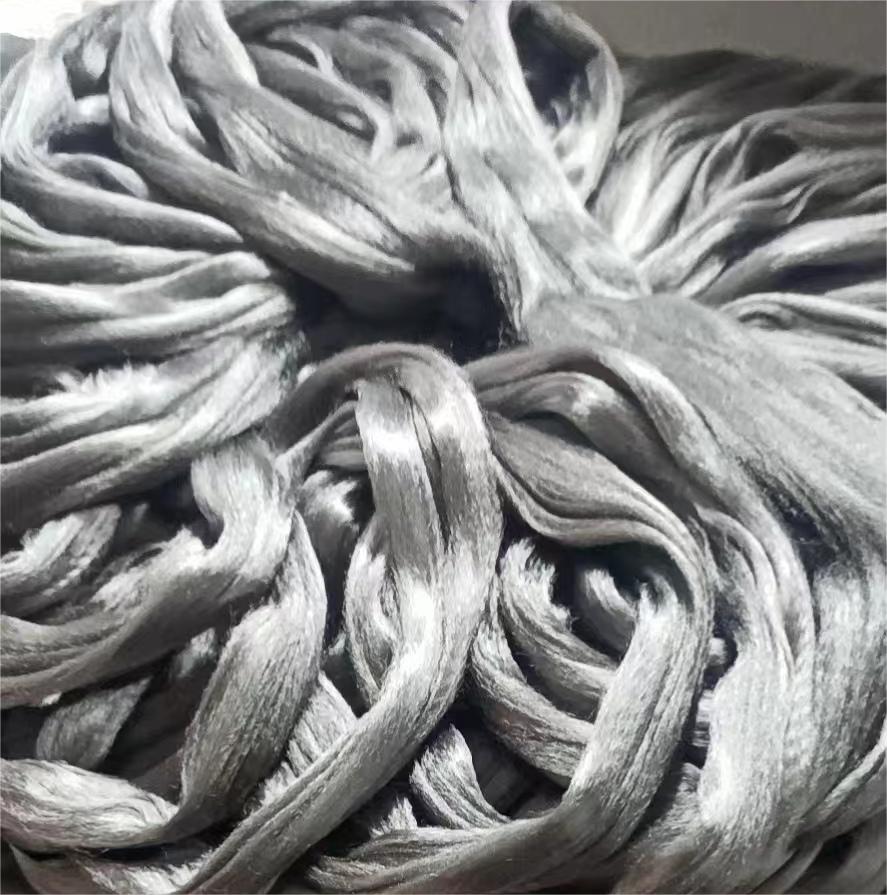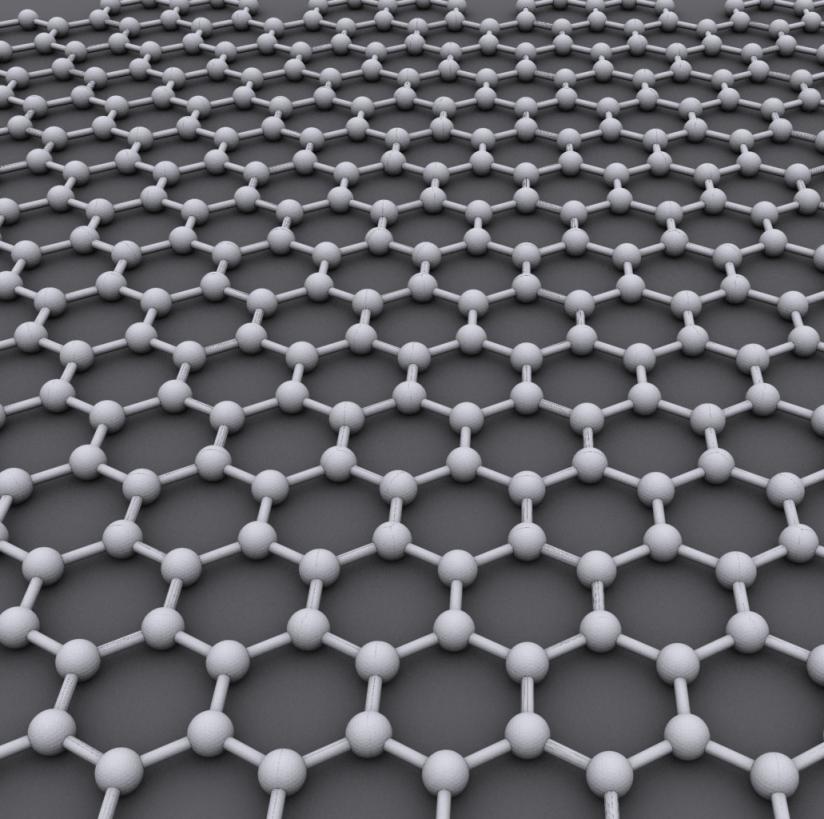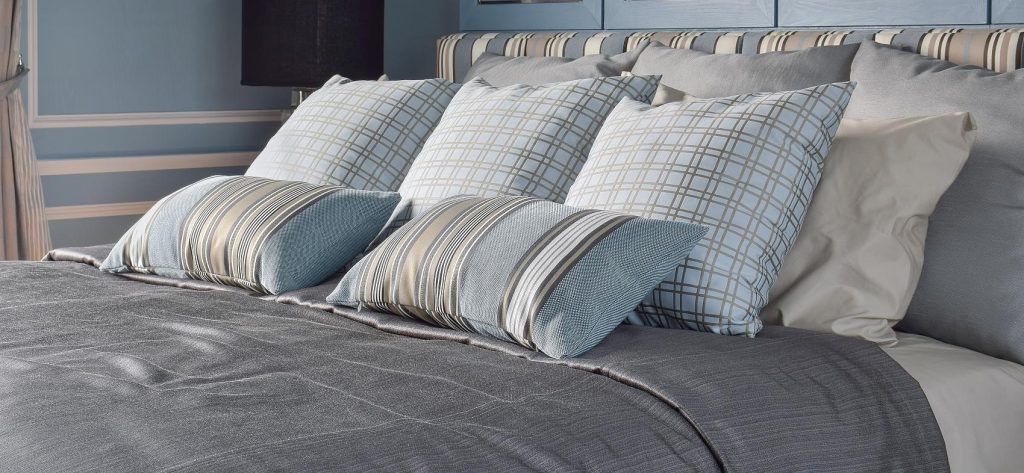Haben Sie schon einmal einen Pullover ausgezogen und sich dabei die Haare zu Berge stehen lassen? Oder nach einer Türklinke gegriffen und einen unerwarteten Stromschlag gespürt? Das kennen wir alle. Diese lästigen Momente statischer Elektrizität sind mehr als nur lästig – sie können empfindliche Elektronik beschädigen und in bestimmten Umgebungen sogar ein Sicherheitsrisiko darstellen. Die gute Nachricht? Mit den richtigen Textilmaterialien lassen sich diese Probleme vollständig beseitigen..
In diesem umfassenden Leitfaden erkläre ich Ihnen alles, was Sie über antistatische Textilien wissen müssen – von ihrer Funktionsweise bis hin zu den Materialien, die in verschiedenen Situationen den besten Schutz bieten.
- Statische Elektrizität in Stoffen verstehen
- Wie antistatische Materialien funktionieren
- Top antistatische Textilmaterialien
- Anwendungen antistatischer Textilien
- So wählen Sie das richtige antistatische Textil aus
- Häufig gestellte Fragen zu antistatischen Textilien
- Was erzeugt statische Elektrizität in Kleidung?
- Wie verhindere ich, dass meine Kleidung statische Elektrizität abgibt?
- Ist das Tragen antistatischer Kleidung unbedenklich?
- Wie lange bleiben die antistatischen Eigenschaften von Kleidung erhalten?
- Kann antistatische Kleidung elektronische Geräte schützen?
- Die Zukunft antistatischer Textilien

Statische Elektrizität in Stoffen verstehen
Statische Elektrizität entsteht, wenn zwei Materialien aneinander reiben und Elektronen austauschen. Besonders problematisch ist dies bei synthetischen Stoffen wie Polyester und Nylon, die Elektronen eher festhalten, als sie frei fließen zu lassen. Die Folge? Eng anliegende Kleider, die nicht richtig sitzen, Haare, die sich nicht verhalten, und überraschende Stromschläge, wenn man sie am wenigsten erwartet.
In industriellen Umgebungen ist statische Elektrizität nicht nur lästig, sondern kann auch gefährlich sein. In Umgebungen mit brennbaren Materialien oder empfindlicher Elektronik kann eine statische Entladung schwere Schäden verursachen oder sogar Brände auslösen. Deshalb ist antistatische Kleidung nicht nur eine bequeme Wahl; sie ist oft eine wichtige Sicherheitsanforderung.
Wie antistatische Materialien funktionieren
Antistatische Textilien funktionieren über einen von zwei Hauptmechanismen:
- Leitfähige Eigenschaften die es elektrischen Ladungen ermöglichen, sich gleichmäßig zu verteilen, anstatt sich in einem Bereich anzusammeln
- Feuchtigkeitsaufnahme das hilft, Ladungen in die Luft abzuleiten
Die besten antistatischen Materialien kombinieren beide Ansätze und schaffen so Stoffe, die nicht nur statische Aufladung verhindern, sondern auch alle entstehenden Ladungen schnell abbauen.
Top antistatische Textilmaterialien
Leitfähiges Edelstahlgarn
Im Gegensatz zu oberflächenbeschichteten Antistatik-Beschichtungen, die mit der Zeit abgenutzt werden, bietet leitfähiges Edelstahlgarn durch Elektronenleitung und Koronaentladung eine dauerhafte antistatische Wirkung. Selbst nach Hunderten von Wäschen bleiben die antistatischen Eigenschaften vollständig erhalten – die erste Wahl für langlebige Arbeitskleidung.
Leitfähiges Edelstahlgarn entsteht durch die Mischung bestimmter Anteile von Edelstahlfasern mit herkömmlichen Fasern (wie Polyester oder Baumwolle). Dieses Garn behält die Leitfähigkeit, Wärmeleitfähigkeit und Korrosionsbeständigkeit von Edelstahl bei, weist aber die Weichheit und die große Oberfläche auf, die chemischen Fasern ähneln.
Für Berufstätige, die antistatische Arbeitskleidung benötigen, bietet leitfähiges Edelstahlgarn mehrere wichtige Vorteile:
- Dauerhafte und stabile antistatische Leistung – Anders als oberflächenbeschichtete antistatische Fasern beseitigt leitfähiges Edelstahlgarn statische Aufladung durch Elektronenleitung und Koronaentladungsmechanismen. Seine antistatische Leistung lässt mit der Zeit oder nach mehreren Wäschen nicht nach und gewährleistet so einen zuverlässigen Schutz während der gesamten Lebensdauer des Kleidungsstücks.
- Überlegene elektromagnetische Abschirmung – In Umgebungen mit vielen elektronischen Geräten schirmen aus leitfähigem Edelstahlgarn gewebte Stoffe elektromagnetische Wellen wirksam ab und absorbieren sie. So werden die Arbeiter vor elektromagnetischer Strahlung geschützt und Störungen empfindlicher Geräte verhindert.
- Außergewöhnliche Haltbarkeit – Der Edelstahlanteil verleiht diesem Garn eine hervorragende Verschleißfestigkeit und Korrosionsbeständigkeit, sodass Arbeitskleidung aus diesem Garn auch in rauen Industrieumgebungen eine längere Lebensdauer hat und gleichzeitig kontinuierlichen Schutz bietet.
Technische Daten für antistatische Arbeitskleidung
Basierend auf den Schutzanforderungen verschiedener Arbeitsumgebungen gibt es bei leitfähigem Edelstahlgarn unterschiedliche Mischungsverhältnisse und Spezifikationen:

- Umgebungen mit hohem Schutz: Garn der Spezifikation Ne21s-50s mit einer Mischung aus 40 % Edelstahlfasern und 60 % Polyester, geeignet für Orte, die eine hohe elektronische Signalabschirmung erfordern, wie etwa Werkstätten zur Fertigung von Präzisionselektronik.
- Umgebungen mit mittlerem Schutz: Garn der Spezifikation Ne21s-50s mit einer Mischung aus 30 % Edelstahlfasern und 70 % Polyester, geeignet für Arbeitsumgebungen, die Strahlungsbeständigkeit erfordern, wie z. B. Operationssäle für medizinische Geräte.
- Grundlegende Schutzumgebungen: Garn der Spezifikation Ne21s-50s mit einer Mischung aus 20 % Edelstahlfasern und 80 % Polyester, geeignet für Standorte mit allgemeinen antistatischen Anforderungen, wie z. B. Standardwerkstätten für die elektronische Montage.
Warum sich Profis für Arbeitskleidung aus leitfähigem Edelstahlgarn entscheiden
Für Fachkräfte in der Petrochemie, der Elektronikfertigung, der Pharmaindustrie und der Präzisionsinstrumentenindustrie erfüllt die Wahl von Arbeitskleidung aus leitfähigem Edelstahlgarn die Anforderungen der Sicherheitsstandards und zeigt Verantwortung gegenüber der Gesundheit am Arbeitsplatz. Diese Arbeitskleidung bietet umfassenden statischen Schutz bei gleichzeitigem Komfort und Atmungsaktivität und reduziert effektiv Sicherheitsrisiken am Arbeitsplatz.
Im Vergleich zu herkömmlicher antistatischer Arbeitskleidung bietet Arbeitskleidung aus leitfähigem Edelstahlgarn eine längere Lebensdauer und eine stabilere Schutzleistung. Trotz möglicherweise höherer Anfangsinvestitionen stellt es unter Berücksichtigung der langfristigen Nutzungskosten und der Schutzwirkung eine wirtschaftlichere und sicherere Wahl dar.

Carbonfaser-Verbundgarn: Verbesserte antistatische Leistung
Durch unseren proprietären Mischprozess haben wir erfolgreich integriert Kohlefaser mit Nylonfilament oder Polyesterfilament-Verbundgarn um ein antistatisches Filamentgarn der nächsten Generation zu entwickeln. Dieser bahnbrechende Verbundwerkstoff unterstreicht unsere führende Rolle bei der Entwicklung anspruchsvoller Textillösungen, die den Leistungsanforderungen von morgen gerecht werden.
Wichtige Leistungsmerkmale:
- Überlegene Leitfähigkeit: Kohlefaserkomponente sorgt für gleichmäßige elektrische Ladungsableitung
- Thermische Stabilität: Behält die Leistung bis zu 400 °C bei, ideal für Umgebungen mit hohen Temperaturen
- Chemische Resistenz: Polymermatrix bietet hervorragende Beständigkeit gegen Säuren, Basen und organische Lösungsmittel
- Leichtbau: 30 % leichter als Alternativen aus Stahl bei gleichbleibend überlegenem Verhältnis von Festigkeit zu Gewicht
- Ermüdungsbeständigkeit: Außergewöhnliche Haltbarkeit für langfristige industrielle Anwendungen
Diese fortschrittliche Garnlösung schließt die Lücke zwischen herkömmlichen antistatischen Behandlungen und leistungsstarken industriellen Anforderungen und ist daher ideal für intelligente Textilien in anspruchsvollen Umgebungen.
Graphen: Das Supermaterial

Ein spannendes antistatisches Material ist Graphen. Diese unglaubliche Substanz besteht aus einer einzigen Schicht von Kohlenstoffatomen, die in einem hexagonalen Muster angeordnet sind. Es ist nicht nur unglaublich dünn und stark, sondern hat auch eine ausgezeichnete elektrische Leitfähigkeit.
Graphen verteilt elektrische Ladungen gleichmäßig über das Gewebe, wenn es in Textilien eingearbeitet wird. Diese Verteilung verhindert statische Aufladung und verleiht dem Material beeindruckende antistatische EigenschaftenTatsächlich können mit Graphen angereicherte Stoffe die höchste Stufe der antistatischen Leistung erreichen.

Nano-Silber: Mehr als nur antistatisch
Ein weiteres innovatives Material im Bereich der Antistatik ist Nanosilbergarn. Nanosilber ist zwar in erster Linie für seine antibakteriellen Eigenschaften bekannt, bietet aber auch antistatische Vorteile.
Nanosilbergarn entsteht durch die Kombination natürlicher Nanosilberionen mit Materialien wie Polyester (PET) oder Polyamid (PA). Der daraus entstehende Stoff bekämpft nicht nur statische Aufladung, sondern bietet auch eine hervorragende Feuchtigkeitsaufnahme und Atmungsaktivität. Diese Kombination macht ihn zu einer vielseitigen Wahl für verschiedene Anwendungen.

Naturfasern: Die antistatische Lösung der Natur
Dabei geht es nicht nur um Hightech-Lösungen. Naturfasern wie Baumwolle, Wolle und Seide verfügen über antistatische Eigenschaften. Diese Materialien können Feuchtigkeit aus der Luft aufnehmen, was dazu beiträgt, statische Aufladungen abzuleiten und abzuleiten.
Besonders Baumwolle ist eine ausgezeichnete Wahl für alle, die antistatische Kleidung suchen. Durch ihre Fähigkeit, Feuchtigkeit aufzunehmen, ist die Entstehung statischer Elektrizität von vornherein weniger wahrscheinlich.
Fasern aus Vulkanschlamm: Ein unerwarteter antistatischer Held
Ob Sie es glauben oder nicht, sogar Vulkanschlamm kann zu antistatischen Textilien beitragen. Vulkanschlammfasern enthalten verschiedene Mineralien, die den elektrischen Strom des Körpers fördern können. Obwohl sie nicht so weit verbreitet sind wie andere antistatische Materialien, bieten diese Fasern einzigartige Eigenschaften, die sie für spezielle Anwendungen geeignet machen.

Anwendungen antistatischer Textilien
Antistatische Textilien haben in zahlreichen Branchen Einzug gehalten:
Sicherheit am Arbeitsplatz
In Umgebungen mit brennbaren Materialien oder empfindlicher Elektronik ist antistatische Kleidung nicht nur eine Frage der Vorliebe, sondern eine wichtige Sicherheitsanforderung. Tankstellenmitarbeiter, Elektronikhersteller und Pharmaarbeiter sind alle auf antistatische Arbeitskleidung angewiesen, um potenziell gefährliche statische Entladungen zu verhindern.
Elektronikfertigung
Die Elektronikindustrie erfordert höchsten Schutz vor statischer Aufladung. Schon eine geringe statische Entladung kann empfindliche Komponenten im Wert von Tausenden von Dollar beschädigen. Arbeiter in Reinräumen und an Fließbändern tragen üblicherweise vollständige Antistatikanzüge aus leitfähigem Edelstahlgarn oder graphenhaltigen Geweben.
Medizinische Einstellungen
Krankenhäuser und medizinische Einrichtungen verwenden antistatische Textilien, um empfindliche medizinische Geräte vor Störungen zu schützen. Zusätzlich werden antistatische Eigenschaften oft mit antimikrobiellen Eigenschaften (wie Nanosilber) kombiniert, um Gesundheitstextilien mit vielfältigen Vorteilen zu schaffen.
Heimtextilien
Von Teppichen bis hin zu Bettwäsche tragen antistatische Heimtextilien zu einem angenehmeren Wohnklima bei. Diese Materialien verhindern das lästige Aneinanderhaften von Stoffen und reduzieren die Staubanziehung. Das macht sie besonders für Allergiker wertvoll.
Sport- und Aktivbekleidung
Sportbekleidung mit antistatischen Eigenschaften verhindert das unangenehme Gefühl des Anhaftens beim Training. Insbesondere Yogahosen profitieren von antistatischen Behandlungen, um sicherzustellen, dass sie sich frei mit dem Körper bewegen, ohne zu klemmen oder zu klemmen.
So wählen Sie das richtige antistatische Textil aus
Berücksichtigen Sie bei der Auswahl antistatischer Textilien folgende Faktoren:
- Erforderliches Schutzniveau: Industrieumgebungen erfordern professionelle Lösungen wie Edelstahlgarn, während für Alltagskleidung möglicherweise nur Naturfasern erforderlich sind.
- Anforderungen an die Haltbarkeit: Wie lange müssen die antistatischen Eigenschaften erhalten bleiben? Edelstahl und Graphen bieten dauerhaften Schutz, während manche Behandlungen beim Waschen nachlassen können.
- Komfort und Atmungsaktivität: Wird das Textil direkt auf der Haut getragen? Naturfasern und Graphen bieten neben ihren antistatischen Eigenschaften hervorragenden Tragekomfort.
- Weitere gewünschte Eigenschaften: Benötigen Sie zusätzlich antibakteriellen Schutz (Nanosilber), elektromagnetische Abschirmung (Edelstahl) oder Temperaturregulierung (Vulkanschlamm)?
- Budgetüberlegungen: Hightech-Lösungen wie Graphen bieten zwar eine bessere Leistung, sind jedoch teurer als Naturfasern.
Häufig gestellte Fragen zu antistatischen Textilien
Was erzeugt statische Elektrizität in Kleidung?
Statische Elektrizität in Kleidung entsteht, wenn zwei verschiedene Materialien aneinander reiben und so einen Elektronenaustausch verursachen. Dies ist besonders häufig bei synthetischen Stoffen wie Polyester und Nylon der Fall, da diese dazu neigen, Elektronen festzuhalten, anstatt sie frei fließen zu lassen. Trockene Umgebungen verschärfen das Problem, da sie den natürlichen Ladungsabbau durch Luftfeuchtigkeit verhindern.
Wie verhindere ich, dass meine Kleidung statische Elektrizität abgibt?
So verhindern Sie statische Aufladungen durch Ihre Kleidung:
- Verwenden Sie Weichspüler oder Antistatikspray für synthetische Stoffe
- Sorgen Sie für eine angemessene Luftfeuchtigkeit in Ihrem Zuhause (30–40 %)
- Erwägen Sie das Tragen antistatischer Kleidung aus leitfähigen Fasern
- Berühren Sie Metallgegenstände mit einem Metallfingerhut, wenn Sie zu statischer Aufladung neigen.
Ist das Tragen antistatischer Kleidung unbedenklich?
Ja, antistatische Kleidung ist absolut sicher zu tragen. Die eingesetzten Technologien zur Vermeidung statischer Aufladung – ob leitfähige Fasern, Naturmaterialien oder spezielle Behandlungen – wurden umfassend auf ihre Sicherheit getestet. Tatsächlich erhöht antistatische Kleidung oft die Sicherheit, indem sie potenziell gefährliche statische Entladungen in gefährlichen Umgebungen verhindert.
Wie lange bleiben die antistatischen Eigenschaften von Kleidung erhalten?
Die Langlebigkeit der antistatischen Eigenschaften hängt vom Material ab:
- Leitfähiges Edelstahlgarn: Permanent (hält die gesamte Lebensdauer des Kleidungsstücks)
- Mit Graphen angereicherte Stoffe: Permanent bis semipermanent (behält seine Eigenschaften auch nach zahlreichen Wäschen)
- Lokale Antistatikbehandlungen: Temporär (möglicherweise muss nach 5–20 Haarwäschen eine erneute Anwendung erfolgen)
- Naturfasern: Die inhärenten Eigenschaften bleiben erhalten, solange der Stoff intakt ist
Kann antistatische Kleidung elektronische Geräte schützen?
Ja, richtig konzipierte antistatische Kleidung kann elektronische Geräte vor Schäden durch statische Entladung schützen. Deshalb tragen Elektronikhersteller und Reparaturtechniker spezielle antistatische Arbeitskleidung. Diese Kleidung leitet statische Elektrizität durch kontrollierte Ableitung sicher von empfindlichen Komponenten ab.
Die Zukunft antistatischer Textilien
Mit dem technologischen Fortschritt können wir in der Textilindustrie noch innovativere antistatische Lösungen erwarten. Forscher erforschen ständig neue Materialien und Kombinationen, um Stoffe zu entwickeln, die nicht nur statische Aufladung verhindern, sondern auch zusätzliche Vorteile wie verbesserte Haltbarkeit, Komfort und Nachhaltigkeit bieten.
Die Welt der antistatischen Textilien ist eine spannende Mischung aus Spitzentechnologie und praktischen Alltagslösungen. Von mit Graphen angereicherten Stoffen bis hin zu den natürlichen Eigenschaften von Baumwolle gibt es eine breite Palette von Möglichkeiten, statische Aufladung in Schach zu halten. Halten Sie beim nächsten Einkauf von Kleidung oder Heimtextilien Ausschau nach diesen antistatischen Materialien. Ihr Haar (und Ihre elektronischen Geräte) werden es Ihnen danken!
Denken Sie daran, dass die richtige Textilauswahl einen großen Unterschied für Ihren täglichen Komfort und die Funktionalität Ihrer Kleidung ausmachen kann. Warum also nicht einmal antistatische Materialien ausprobieren? Sie werden überrascht sein, wie viel Unterschied sie in Ihrem Alltag machen können.





Welches Material für Strumpfhosen sollte ich in Betracht ziehen, da die meisten meiner Meinung nach an der Hose kleben. Kennen Sie einen geeigneten Hersteller?
Hallo Margaret
Das Problem, dass Kleidung an der Hose klebt, kann durch statische Aufladung verursacht werden. Durch die Verwendung antistatischer Materialien lässt sich dieses Problem vermeiden. Der Bekleidungshersteller kann das Problem nicht beheben.